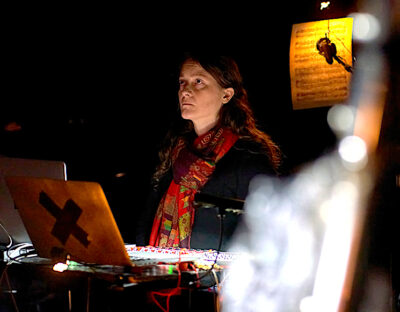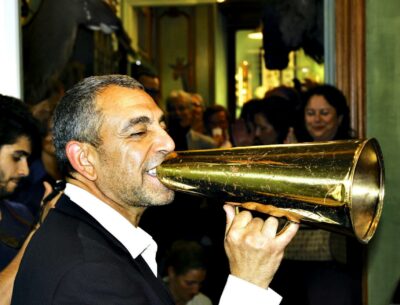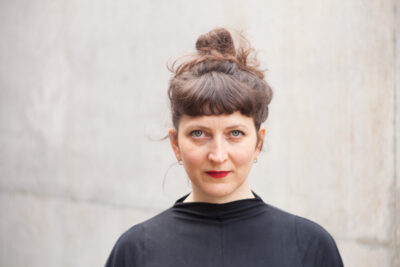On March 2, the Maison de la Poésie in Paris was host to a strange array of animals of all kinds, imagined by Jacques Rebotier and featured in his collection Animaux de transport et de compagnie, 199, recently published by Le Castor astral with illustrations by Wozniak.
Pell-mell, animals (real ones!), machines (the computer, the suitcase, the rubber band...), phenomena (war, lightning...), ideas (death, thought...): so many concrete and abstract realities suddenly "animated". The author himself read these nuggets of humor and poetry, alongside actors Dominique Reymond and Charles Berling: a mischievous performance in the form of a relay game, full of bouncing words and sounds. As we all know, Jacques Rebotier cultivates wordplay and verbal pirouettes... His thoughts ricochet!
Jacques RebotierIn the reading offered to the public that evening, there was a small element of improvisation, but above all there was a scenario: each had his own moment of reading, linked to the others in a form of dance. Is that how you came up with the idea of a three-way reading?
Yes, I chose the texts and imagined how we could share them. I had also planned a free sequence, in which the audience would intervene, before returning to a final, entirely premeditated sequence. I like it when I don't have a set plan when I do these readings. There are always moments when I ask people what they want me to read, and there are always moments of improvised speech...
What's interesting is that you and the actors obviously have very different ways of experiencing texts. It seems natural to me that you should experience texts differently, since they're in your body, your hands, your head...
Let's just say they're more respectful than I am. In any case, it takes time to feel free with a text, as with a score. And you never have that rehearsal time for a reading.
And perhaps a little less playful, less facetious?
Simply because they're more respectful of the text!
I liked the way you moved around the stage, the moment when you left the seated position in your armchairs. These movements brought life to the animals read. Behind you, at the back of the stage, there was also at times a projection of various elements from the book: Wozniak's drawings, the table of contents... How did you imagine this projection in relation to the different reading moments?
It's a desire to "displace", which corresponds to the perversion found in the book: when you read the title, you think you're dealing with animals, but there are also objects such as... the tape recorder, the crutch, the fire extinguisher... The perversion is already there! The screen behind us showed a number of elements from the book, such as La table (des matières) (animal no. 197): because a table is a pet, but it's also the book's table of contents. We projected it, so that spectators could follow our readings, and eventually choose an animal and submit it to us. There are also a few sidebars, quizzes, because in the book, there are little sidebars that are also numbered. They're there to decentralize things a bit. For many readers, a book is almost a "sacred" object. I like to decentralize and disrupt that. People wonder what I'm talking about: the subject is diluted, deconstructed. I wanted to reflect that in the reading. The book ends with L'achevé (d'imprimer), and it's also an animal, number 199.

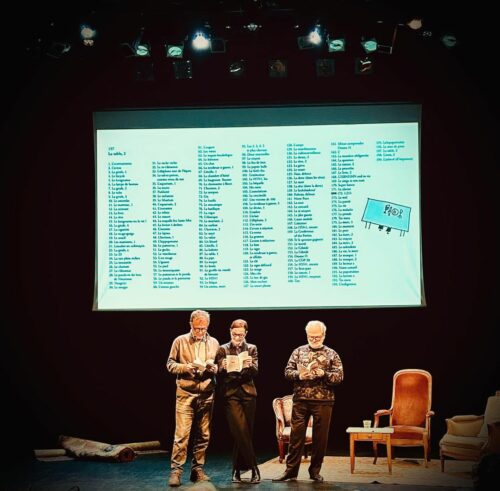
What does the word "transport" actually evoke for you?
It's a whole association of ideas: the fact that animals are transported as if they were objects, by means of transport companies, which means that in the book the truck is a pet. There's also the idea of pets, the little animals we adopt. Once domesticated, they lose their wild character and serve mankind, but in a different way. In the title, there's also a subtext in the idea of animal companionship, because some animals live in groups, in company (schools of fish, for example), or animal transport (often to their misfortune).
This rhizome-like reflection means that we're always asking questions about the way words are arranged. "What exactly is the title of this book? Initially, I had chosen another title: 250 animals for transport and companionship, and I had envisaged two books, all brought together in a boxed set. For the second book, I'd planned to ask Wilhelm for some drawings. Unfortunately, the publisher asked me to scale down the whole thing. Deleting 51 texts was a lot of work: I had to go over it ten times. I wanted to get to 199 at all costs - certainly not 200: 199 is much better. As a result, I had to remove some animals, and among them a lot of musicians: cellists, an organist - or musical instruments - because obviously, they're animals too, and they transport us. Animals for transport and companionshipare texts that I've been writing as I go along, for the last fifteen years. I'm still doing it, and I'm enjoying it... It's become almost like a little diary. I wrote two of them yesterday, in bed!
This book is illustrated by Wozniak. Tell us about the process with him.
It was great fun!
Did you already know each other?
No, we didn't. I got in touch with him through Jean-Luc Porquet, who's a critic at Le Canard Enchaîné. I really like Wozniak's drawings. I always find poetry in them, and also a little quirkiness that I like. It was funny, because he doesn't speak French very well, so we had trouble understanding each other. There was even a misunderstanding at the beginning. He thought it was a children's book, so at first he did drawings for kids. I had to react and explain. In the end, he redid the whole thing.
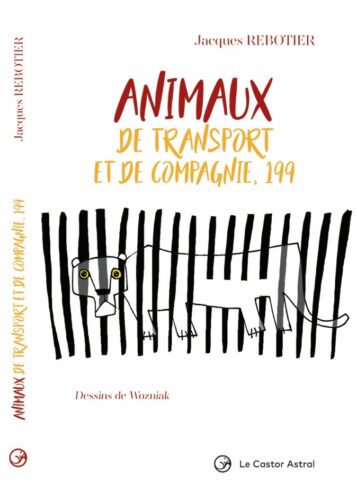

I think you have two things in common: poetry and a kind of naivety.
Yes, an innocent, beautiful look. Innocent... but like that of a child who sees horrible things. It's a wry sense of humor: reality, seen from its violent angle.
You are, I believe, an avid reader of Le Canard Enchaîné?
Yes, Le Canard Enchaîné, Charlie Hebdo, and even, in its day, Hara-kiri Hebdo!
Is there a trace of this in your writing, this critical and amused eye on the world?
A critical and ironic eye, yes.
For this reading at the Maison de la poésie, you were accompanied by Dominique Reymond and Charles Berling. Are they actors you know well?
I once worked with Dominique on Eloge de l'ombre by Junichiro Tanizaki, an essay on shadow in the Japanese tradition, and more precisely on the desire and need to place things in the dark, in order to perceive them better. This paradox obviously appealed to me enormously, and I was inspired to stage this text at the Théâtre des Amandiers in 1997. Curiously, I wanted a woman to carry the text. I thought of Dominique Reymond, because of her voice, at once warm and distant, very simple too, lively and carnal.
In the staging, she was always completely in profile: she was speaking to someone we couldn't see. In the show, I incorporated excerpts from a piece I'd composed for clarinet. In fact, I had cut up this piece, , to make a piece of music for the stage, with sounds coming out of everywhere. The set design by Virginie Rochetti was superb. She had made different layers of crumpled plastic canvas, laid vertically: it created extraordinary lighting! Dominique was seated in profile on a very high chair, with a very long dress that fell to the floor, as if she had the legs of a giant... I really liked this play, and so did Dominique: she's very keen to do it again, and has been canvassing all the theaters to do so: she loved the text. She's an actress I really like: she's very modest, and extremely hard-working too. She's always afraid of doing the wrong thing, and she has a great attitude, full of reserve.
I'd never done anything with Charles Berling. We met a long time ago, when I was an associate playwright at the Théâtre national de Strasbourg, and he was a permanent member of the company. I like his crazy, childlike side, a kind of nonchalance, a distancing too. What I liked about the way they read was that they had fun with the texts, a bit like children.
As far as readings are concerned, I like encounters and changes of perspective, so I often renew my companionship, so as not to break things in or freeze them. I've read some Animaux with violinist Anne Le Pape, and with Joël Jouanneau, in two voices: we did a little tour of cafés. I'll soon be reading a few in Burgundy with clarinettist Dominique Clément.
What perhaps best characterizes this new opus Animaux de transport et de compagnie, 199 - but it's true of your writing in general - is the ricochet. This book is really about bouncing and ricocheting. At the end of your texts, you also cultivate the pirouette, the volte-face, the dodge!
Ah yes, the dodge, for sure. I also like the word rebound, because it allows you to go elsewhere. If there are so many dodges at the end of texts, it's also because a lot of texts close with a ricochet, with references to other animals: "voir numéro tant". Sometimes I even refer to the next book, which doesn't yet exist and hasn't been published, so people are lost because they can't find it.
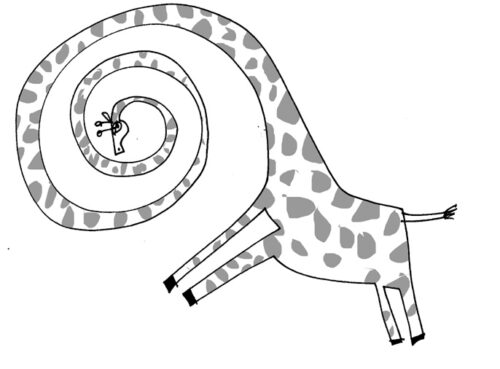
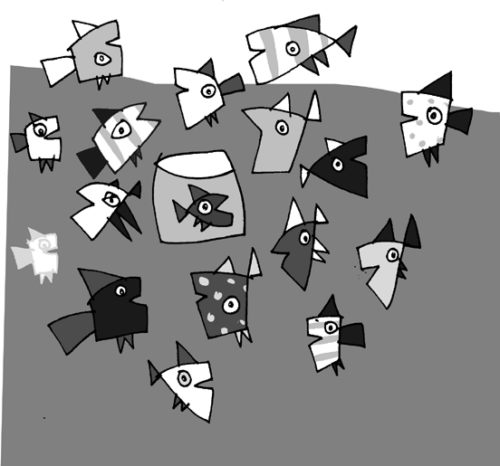
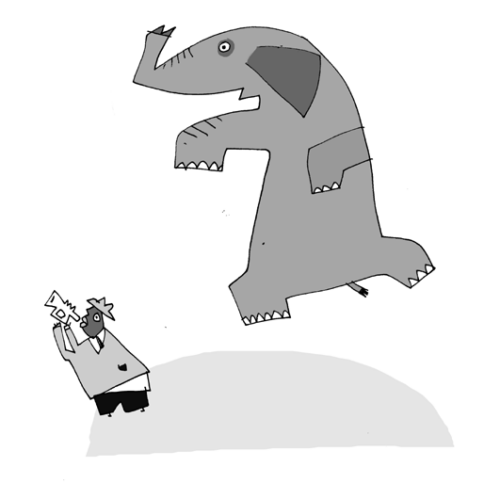
So you want to lose your reader?
Or at any rate, lead him astray! At one point too, I propose three ways of reading the text: in order, in absolute disorder...
Always your taste for rhizomes and bundles of meaning.
And labyrinthine effects too. We're lost, lost, a bit like in life... in any case, I'm lost, and in fact, everyone is.
Writing will continue to keep you busy. I understand you're thinking about a show that will premiere at the Théâtre de la Colline next November?
It's an idea that's been close to my heart for a long time: to write and stage small choirs spoken in unison, with three actors. They're words from everyday life, phrases you hear in cafés, on the street, on the radio... I write them down in my little diary. Some of them will be broadcast into the space on loudspeakers. I'll also be working on a very important soundtrack with Bernard Valléry: we're collecting a lot of sounds to create different sound environments: a forest, a city, a war... I'm imagining a moving fabric of speech, moving within these environments. These landscapes will be interspersed with the lively movements of suitcases on wheels, which will disrupt the whole scene. And hop, we reconfigure ourselves... and hop, we sit on the seat-cases, and hop!
Why only three actors, when you're talking about a small choir?
Three is a pretty good number for working on unison speech! I've already tried this type of thing - always with very everyday speech - but with more than three, it doesn't work: it's very difficult, because people can't listen to each other any more. What I like about this idea of unison is the intense listening at the moment, the obligatory inter-listening.
With lots of silences too, a whole lot of work on silence. I've used spoken choruses in quite a few shows in the past (for example, in Réponse à la question précédente, or Les trois parques m'attendent dans le parking). This time, I'd like to do the whole show with them.
And what is Jacques Rebotier-composer plotting?
I want to write a second piano concerto, again for Alexandre Tharaud, but this time for a chamber orchestra.
To be continued... a new dodge?
Interview by Anne Montaron
Photo © Hélène Houelle



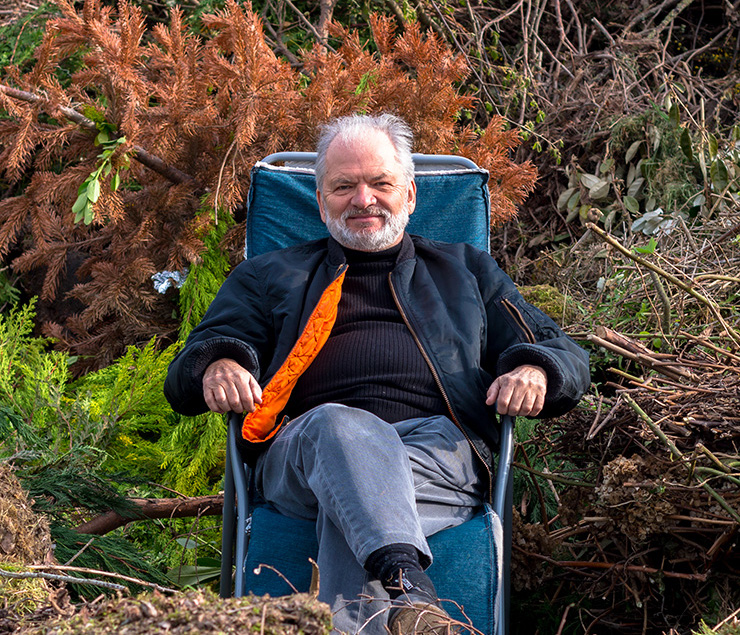)
